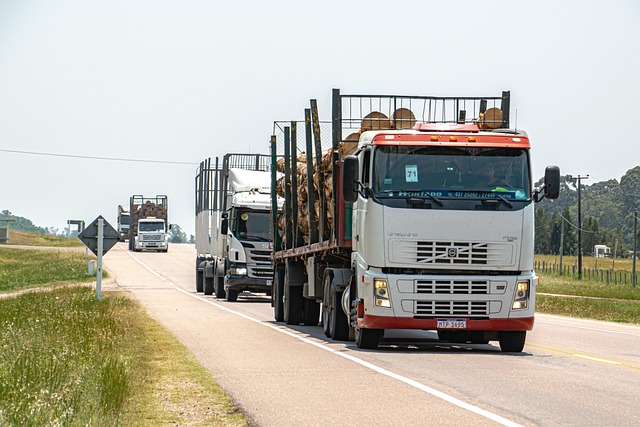Looking to register your car in California? This guide walks you through the process step-by-step, ensuring a smooth experience. First, understand the state’s registration requirements for cars. Next, gather essential documents for VIN (Vehicle Identification Number) verification, a crucial step in the registration process. After passing VIN check, complete the registration online or visit a DMV office. Pay the required fees and receive your official certificate. Master these steps, and you’ll be on the road in no time!
- Understand California Car Registration Requirements
- Gather Necessary Documents for VIN Verification
- Perform Vehicle Identification Number (VIN) Check
- Complete Online Registration or Visit DMV Office
- Pay Registration Fees and Receive Your Certificate
Understand California Car Registration Requirements

Before registering your car in California, it’s crucial to understand the state’s specific requirements for vehicle identification number (VIN) verification. California mandates a thorough VIN inspection to ensure all vehicles on its roads meet safety and environmental standards. This process involves checking the vehicle’s history, including any prior accidents, recalls, or outstanding issues.
A key component of this is utilizing a reliable mobile VIN verifier. These services, often provided by specialized apps or companies, allow for convenient and accurate VIN inspection right from your smartphone. By inputting your car’s unique VIN number, you gain access to detailed information that can expedite the registration process. This includes vehicle specifications, ownership history, and crucial safety data, ensuring both a seamless and secure car registration experience in California.
Gather Necessary Documents for VIN Verification

Before you start the car registration process in California, ensure you have all the necessary documents for VIN (Vehicle Identification Number) verification. This step is crucial as it confirms your vehicle’s authenticity and history. Gather essential papers such as the title or bill of sale from the previous owner, a valid driver’s license or state-issued ID, proof of insurance, and your current address verification. Additionally, you might need to provide a completed California Vehicle Registration Application form.
For a seamless vin inspection process, consider using a mobile vin verifier service. These services send a specialist to your location, saving you time and effort. Alternatively, some states offer online or mail-in registration options that may also include remote vin verification through a third-party provider, making the entire procedure more convenient for California residents.
Perform Vehicle Identification Number (VIN) Check

Before registering your car in California, it’s crucial to perform a Vehicle Identification Number (VIN) check. This step is essential for verifying the vehicle’s history and ensuring it meets all legal requirements. A VIN verification process involves cross-referencing the unique 17-character code with various databases to gather information about the car’s past owners, maintenance records, and any reported accidents or damages.
In today’s digital era, you don’t have to physically visit a DMV office for this check; instead, opt for convenient mobile vin verification services. A mobile vin inspection or using a reliable mobile vin verifier can streamline the process, allowing you to quickly access detailed vehicle history reports from the comfort of your home or on the go. This modern approach not only saves time but also enhances the overall car registration experience in California.
Complete Online Registration or Visit DMV Office

You have two options for registering your car in California: complete the process entirely online or visit a DMV office. If you opt for an online registration, you’ll first need to verify your vehicle’s VIN (Vehicle Identification Number) through a mobile vin inspection or a third-party service. This step is crucial as it ensures the accuracy of your vehicle’s information and helps prevent fraud.
Once your VIN is verified, you can proceed with filling out the necessary forms online. The California DMV provides an efficient and user-friendly platform for this purpose. Alternatively, if you prefer in-person registration, a visit to the DMV office will still require initial VIN verification, which can often be done on-site through their mobile vin inspection services or by bringing your vehicle for a physical inspection.
Pay Registration Fees and Receive Your Certificate

After completing the registration process, it’s time to pay your vehicle’s registration fees. These fees vary based on several factors, such as the type and age of your car. You can typically pay online or in person at a local California Department of Motor Vehicles (DMV) office. Once your payment is processed, you will receive your Certificate of Registration, which officially registers your vehicle. This certificate is crucial for legal driving and should be kept up-to-date to avoid any penalties.
A mobile vin inspection or vin verifier can also play a role in this process by ensuring the Vehicle Identification Number (VIN) on your car matches the information provided by the manufacturer. This adds an extra layer of verification, which is important for both security and accountability. So, don’t forget to double-check the VIN details during registration to ensure everything aligns accurately.
Registering a car in California involves understanding state requirements, gathering essential documents for VIN verification, performing a Vehicle Identification Number (VIN) check, completing online registration or visiting a DMV office, and paying fees. By adhering to these steps, you’ll ensure a smooth process, allowing you to hit the road legally and confidently. Remember, accurate VIN verification is key to compliance with California’s car registration regulations.
